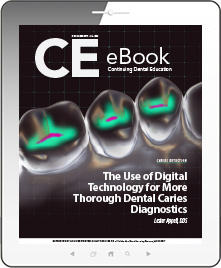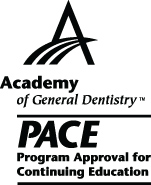CDEWorld > eBooks > The Use of Digital Technology for More Thorough Dental Caries Diagnostics


ADA CERP is a service of the American Dental Association to assist dental professionals in identifying quality providers of continuing dental education. ADA CERP does not approve or endorse individual courses or instructors, nor does it imply acceptance of credit house by boards of dentistry. Concerns or complaints about a CE provider may be directed to the provider or to ADA CERP at www.ada.org/cerp/

Approved PACE Program Provider. FAGD/MAGD credit. Approval does not imply acceptance by a state or provincial board of dentistry, or AGD endorsement. 1/1/2023 to 12/31/2028. ID # 209722.
eBook
Released: Wednesday, January 10, 2018
Expires: Saturday, January 30, 2021
The Use of Digital Technology for More Thorough Dental Caries Diagnostics
By Lester Appell, DDS
Commercial Supporter: DEXIS
Caries detection has changed markedly in recent decades as technology has advanced and dentists have demanded an improved product landscape. There are many transillumination options clinicians can choose from to replace or complement traditional x-rays. Certain caries detection systems are well suited for cases in which the patient either is young or otherwise moves around excessively making the taking of x-rays difficult. The article concludes that clinicians must access a caries detection system's value on a case-by-case basis and should also become familiar with the current changes to insurance reimbursement.
LEARNING OBJECTIVES:
- Discuss similarities and differences of various caries detection technology currently available.
- Understand the history of caries detection and the rationale behind modern technologies.
- Determine what case situations would benefit from using certain caries detection systems.
About the Author
Lester Appell, DDS
Private Practice, Arlington Heights, Illinois


